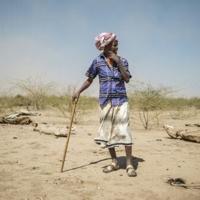Efforts to reduce hunger were thwarted last year due to conflict, economic instability, and extreme weather, affecting around nine percent of the global population, according to UN agencies. Approximately 733 million people may have experienced hunger in 2023, a level that has remained constant for three years following a significant increase after the Covid-19 pandemic.
The situation varies across regions, with one in every five people in Africa experiencing hunger compared to a global average of one in 11. Latin America and the Caribbean made progress while Asia stalled in the efforts to eliminate undernourishment. The broader goal of ensuring regular access to sufficient food for all also did not see improvement during that time.
Last year, 2.33 billion people experienced moderate or severe food insecurity, leading them to skip meals occasionally, which amounts to almost 29 percent of the global population. The report by the Food and Agriculture Organization, the International Fund for Agricultural Development, UNICEF, the World Food Programme, and the World Health Organization indicates that the UN’s goal of a hunger-free world by 2030 is fading further.
Conflicts, climate change, and economic downturns are identified as major factors contributing to food insecurity and malnutrition, compounded by underlying issues such as inequality, unaffordable healthy diets, and unhealthy food environments. These factors are becoming more frequent and intense, exposing more people to hunger and food insecurity.
The report highlights the affordability of a healthy diet, noting that more than one third of the global population could not afford it in 2022, with significant regional disparities. In low-income countries, over 71 percent of people could not afford healthy diets, compared to just over six percent in high-income nations.
– ‘No time to lose’ –
The post-Covid economic rebound has been uneven, with ongoing conflicts and extreme weather events. The absence of a coordinated effort to increase funds for hunger relief has hindered progress. The report suggests a major reform in financing food security and nutrition to address the issue.
This reform proposes adopting common definitions to align all stakeholders and estimates that between $176 billion and $3,975 billion are needed to eradicate hunger by 2030. However, the fragmented financial architecture makes it challenging to scale up and effectively implement financing for food security and nutrition.
Better coordination among donors, international agencies, NGOs, and foundations is essential, as the current system lacks shared priorities and is inundated with small, short-term projects. The report emphasizes the importance of supporting small-scale farmers and providing access to energy in rural areas.
To address weaknesses in the current system, the report suggests developing financial instruments that combine private and public funds to encourage private investment in food security, a key factor in productivity and stability.
The report concludes that there is no time to waste, as the cost of inaction far outweighs the cost of the action it advocates for.
jum/imm





